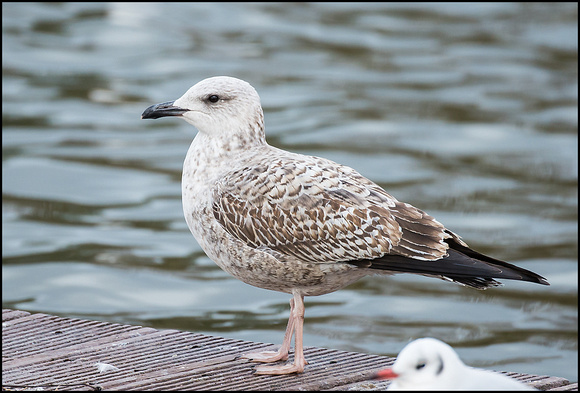Here is a first winter gull, taken at Cosmeston in South Wales, a site full of LBB's and the odd Herring gull. It looks too light for a LBB and the tertials and greater coverts are wrong for a Herring. It therefore is a bit of a mystery.
One of our local experts, Barry Stewart has commented
To me the bird looks like a YLG for the following reasons: Pale scaps rule out LBB and coarse patterning fits YLG well Tertials perfect for YLG. Coverts appear to have a few replaced feathers another YLG trait. White head and belly with restricted marks on flanks, breast sides and neck again good for YLG. Dark mask, black bill again fit YLG and of course the obvious dark bar on the outer greater coverts is a real plus for YLG The main negative with bird is the bill looks a bit weak, but as you know this is highly variable.Consequently, Barry is still not sure.
In addition to the above the 'belly' hanging down between/behind the legs is also a good indicator of a YLG.
Like Barry, I am a also a bit reluctant to jump to a YLG given info on a similar gull in Portimau, Portugal. Have a look at
http://gullsofalgarve.blogspot.pt/2014/02/possible-herring-gull-x-lesser-black.htmlNelson Fonseca found this ringed bird and fancied it as a YLG until he got the ringing information - one of Peter Rock's birds. A LBB, ringed near Bristol. Perhaps this could have been a hybrid but it has close similarities to our bird which potentially could have been born only 10's of miles from Nelson's bird.
Id'ing this gull really shows the challenges of correct identification of these large gulls - with this one initially labelled as a Herring gull. Perhaps it is a YLG, but we only see a handful of YLG's each winter.
Any comments very welcome.


